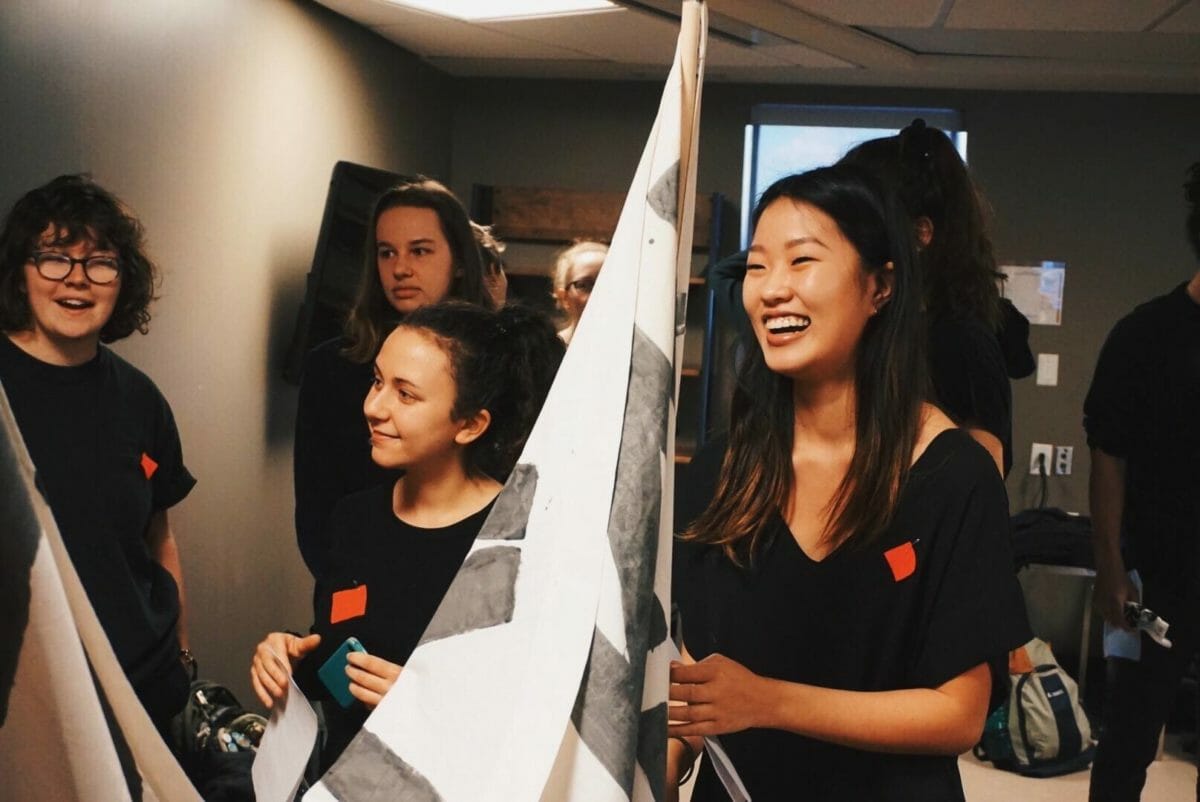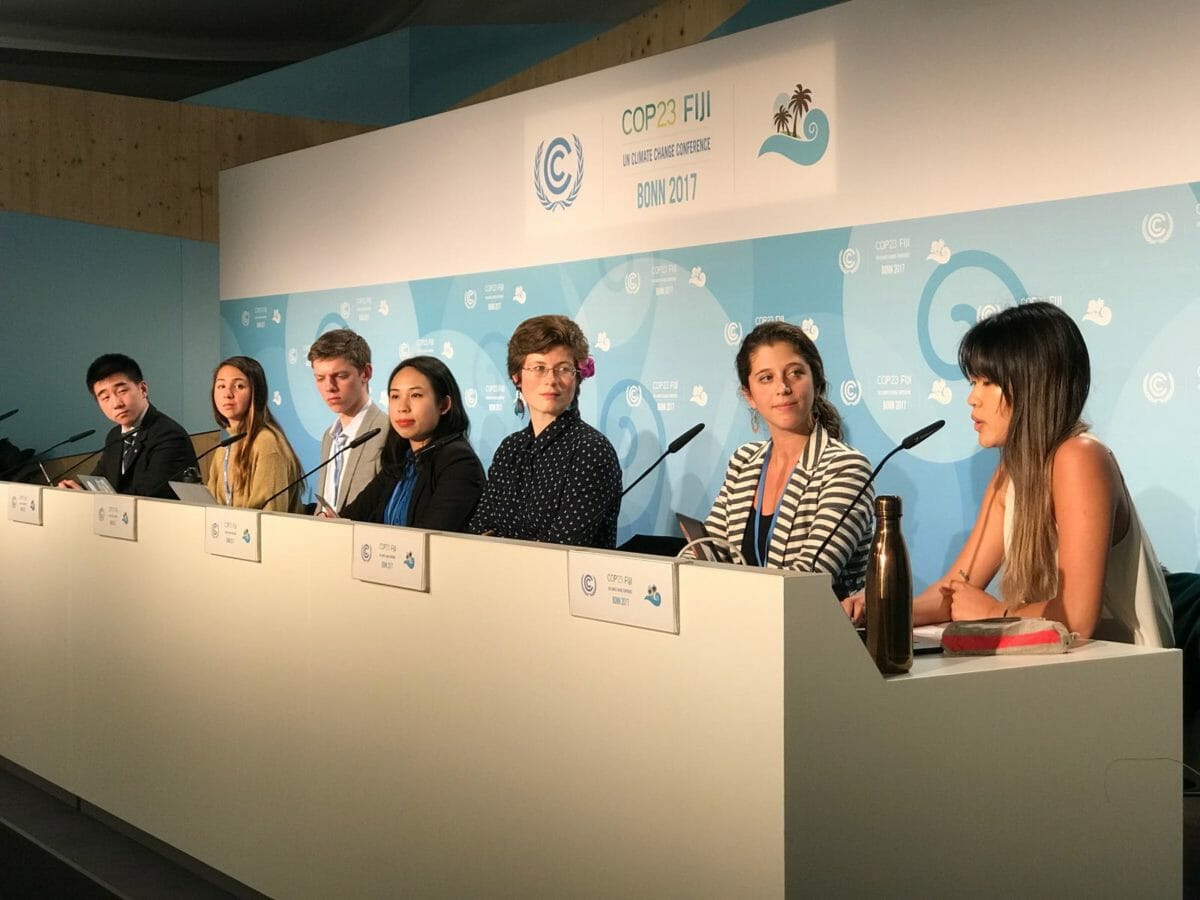Environmental Justice with Tina Oh
By Mia Tran, Posted on November 11, 2021
Community Forests International’s Environmental Justice intern Mia Tran had the opportunity to interview award-winning environmental justice activist, Tina Oh, to talk about what the movement means to her and what she sees for its future. Tina Oh is a migrant justice organizer with No One is Illegal – Halifax/Kjipuktuk (NOII-Hfx) and a master’s candidate in environmental studies at Dalhousie University. In 2018, Tina was named one of Canada’s Top 25 Environmentalists Under 25 for her activism and divestment work.
Can you tell us about yourself?
I was born in Daejeon, Korea. My family and I immigrated to Canada/Edmonton, Alberta when I was 2 years old. My family underwent immense struggles to secure permanent-residency immigration status; it was a process that took us over 13 years. Throughout those 13 years (the bulk of my childhood), my parents worked, and we lived very precariously. It’s important for me to claim this integral part of my identity, especially now since most of my organizing work is rooted in migrant justice and the intersections between climate and migrant justice.
Right now, I’m a coordinator for my neighbourhood’s community garden in Edmonton. I’m excited to be back in Halifax this fall to start my new job. I feel such a strong sense of community belonging, commitment and responsibility to continue organizing in Mi’kma’ki, especially to be in Halifax where my work, No One is Illegal – Halifax/Kjipuktuk, is based.
I graduated from Mount Allison in 2018, and I consider my years in Sackville as being so formative to my political analyses and activism. Sackville and communities across Cumberland County are lands I deeply care about and feel a connection to. My late mentor, Su Morin and I worked with the Sackville community garden and gardens all across Cumberland. She taught me immensely about environmental and food justice; I am filled with gratitude thinking about the ways she and those lands changed my life.

During her undergrad, Tina was an organizer with DivestMTA and a delegate to United Nations’ climate change negotiations—experiences that cemented her ambitions to be a dedicated and principled organizer.
What does environmental justice mean to you?
I still very much consider myself a learner and youth to movement-work. Something I’ve noticed in my almost 7-years of organizing is that my analysis of environmental justice drastically expands every year. The more I learn and act, I feel a deeper sense of commitment to organize and win justice. To me, environmental justice means rapid and immediate economic degrowth. Relatedly, this means a re-constituting of how humans relate to Indigenous lands, flora, fauna and people. Our economic systems, and the institutions that prop them up, inform the ways that we live, work and engage with others and the land, whether we are conscious of how these systems function or not. The intertwined climate and colonial crises we’re in right now is a direct consequence of a mythical notion of unlimited corporate growth at the expense of the health, decency, dignity and well-being of the global majority of people.
What sparked your involvement in environmental justice?
As a researcher who studies narratives (ie. the stories that people tell, the meanings that they enshrine, and what it says about them), I’m always interested in questions like this. I used to think and tell myself that there was this very methodical “story” as to what led me on this “path” to taking action for environmental justice. In hindsight, I don’t think the experience of being or becoming an activist “fits” neatly into a “neat” story. So many people, factors, privileges, sufferings, mistakes and joys were all and each sparks in their way to deepening my political analyses and commitments to a moral imperative.
“When we learn, we claim personal responsibility by taking action. When we take action, we claim personal responsibility and we learn. It’s a cycle.”
More than anything, when I think about what facilitates action (which is a question that I think about a lot as an organizer), I think about the power and conviction of collective ownership. I understand collective ownership to be a practice and process. The more I learn and do, the more I feel cemented in the work. I see this happening for others around me too. The hope is that it becomes a practice that cements for life, for all of us.

Tina Oh speaking at the COP23 Climate Summit. Tina attended COP22 and COP23 as a youth delegate.
What do you think is the most crucial first step for people interested in getting involved in environmental justice?
Dialogue and collective engagement. We can’t learn and we can’t organize together without being dialogically engaged with one another. Another crucial first step is learning to sit with the urgency and patience required to be involved in movement work that often feels so defeating. At the same time, capitalism ingrains in us a mindset of scarcity. Remember and study-up, that there is a rich and translucent living history, which includes movement-Elders who have been involved in environmental justice for so long. Seek and build relationships with Elders and make mentorship relationships; the only way we can win is with a coordinated and strong multi-generational movement.
Lately, I’ve been learning a lot about how being involved in movement work is an embodied process. When it comes to the climate crisis, or really a crisis that seems so inescapably and existentially immediate, many of us are unable to regulate our bodies to safely perceive and calmly grasp the multiple crises at hand, especially when they are generations in the making. We make mistakes when our fight-or-flight-or-freeze reactions go unchecked.
What do you see as the biggest threat to the environmental justice movement?
Shame-based organizing is a threat I see more and more in the movement. Ironically, I feel ashamed for having engaged in it. And I definitely still catch myself engaging in practices and dynamics of it. Examples of this would include shaming someone for eating too much meat, using plastics, or driving a car. At a macro-level, it looks like a culture of exclusionary politics and gatekeeping in how people become involved in activism. That being said, it’s important not to distract from the real issue at hand which is about power. The biggest threats to the environmental justice movement are the same as always: the rich and powerful elite that profit off the destruction of lands that are not theirs.
Do you think the ‘new normal’ of a post-pandemic world affects the environmental justice movement?
The cracks and divisions in our social nets are more apparent than ever. Housing and rent in Halifax and Canadian cities are nauseatingly unaffordable. Long-term care and the healthcare system have been battered. The pandemic and exploitative bosses have enabled precarious working conditions and low wages. The environmental justice movement must integrate, adapt, absorb and reflect the material realities in this (quasi-post) pandemic world. If we don’t, we fail the opportunities to organize the mass number of people required to win real substantial changes.
This interview is the third post in our ongoing Environmental Justice series. To keep learning, you can read more about the history of environmental justice and continue with how the movement is tied to Indigenous reconciliation. You can also check out our previous discussions about climate justice, and Community Forests’ commitment to anti-racism.
